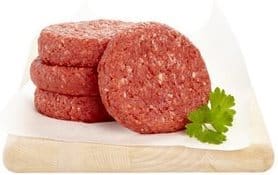AUSTRALIA is now clearly benefiting from the seasonal decline in dairy cow slaughter in New Zealand, with the benchmark 90CL grinding beef price for imported frozen trim into the US now pushing past A600c/kg.
 This week’s indicator price offered yesterday by Steiner Consulting is A603.4c/kg, up more than 63c, or 10pc, since late March.
This week’s indicator price offered yesterday by Steiner Consulting is A603.4c/kg, up more than 63c, or 10pc, since late March.
The market is still a long way from the heady heights seen in 2015, however, when pricing hit +740c in September before the rise in US rates of kill took hold.
US end-users are now looking to ensure they have sufficient stocks to get through the northern hemisphere summer, Steiner’s latest report says.
As a result, the price spread between domestic US and imported lean beef continues to narrow.
Will imported prices go past domestic?
The main topic of conversation in the US at this time is when imported beef prices will start to trade at a premium to domestic product – likely in the next couple of months.
“If imported beef does trade dearer than domestic at some point, it is better for the Australian industry that it is due to imported prices continuing to climb, rather than US prices falling,” Steiner said.
Based on normal seasonal patterns, this is the more likely case, at least in the short term, as US beef prices tend to start falling in late summer/early autumn, as cow culls begin.
In addition, there was little prospect of imported supplies lifting in the short term, given supply conditions in Australia and NZ, Steiner said. New Zealand weekly slaughter is now around 50pc lower than what it was in mid-May.
“This leaves Australian packers as the main player in the market, as both Uruguay and Central America numbers also are lower than a year ago,” Steiner said.
“Lower slaughter in Australia has certainly limited the supply of imported beef available in the open market. This is worth highlighting because in recent years there has been a notable increase in purchases of imported beef that are done directly between overseas packers and domestic end-users.
“When Australia slaughter increased there was a temporary bump in the traded supply, with the US absorbing much of the additional production. Now that slaughter has declined, overseas packers are first filling orders from their regular, large, direct buyers and only showing very limited volumes in the open market.
“As supplies of imported beef seasonally declines, overseas packers that have well-sold forward positions will tend to be fairly inelastic in their offers, a situation that could only get worse in the coming months,” Steiner said.
In US$ terms this week’s indicative imported 90CL cow beef price rose US3c, to US202c/lb CIF. The customs-cleared price in the Steiner report was US209c, compared with domestic US 90CL beef trading for US218¢/lb.
With lower supply out of NZ, Australian offers remain firm and US end-users are looking to build some inventory, Steiner said. Imported round cuts were moving lower this week, however, in line with the decline in US domestic prices.
Halfway through June, Australian beef exports to the US had reached 12,355 tonnes, suggesting the monthly total will be well down on May shipments, despite a large global export volume of 50,960t over the same period.
Corn prices will have an influence
Just as last year, US corn prices have rallied recently, Steiner said.
“The rally followed news of drought and floods in South America, which cut short soybean and corn production but it has persisted as US market participants fear an early start of the La Nina weather pattern.
“The situation in the US grain market bears watching. US farmers have indicated they plan to plant more acres with corn this year than a year ago. A normal growing season means there will be ample corn supplies and prices should stay under $4 per bushel,” it said.
However extremely dry conditions during the July pollination period July had the potential to significantly alter that outlook. US corn export demand is also expected to improve given a short crop in Brazil while ethanol use is on the mend following steady gains in US gasoline consumption.
“The bottom line is that higher corn prices could be bearish for US beef and cow meat prices in the northern hemisphere autumn, pushing more cows to market. However, higher corn prices also could cut short the turn in the cattle cycle. The jump in cattle inventories last year was one of the biggest of the last 50 years, and has been the primary driver for the downward trend in both feeder and fed cattle prices,” Steiner said.
“Higher feed costs have the potential to shift the growth trajectory for US cattle this year.”
